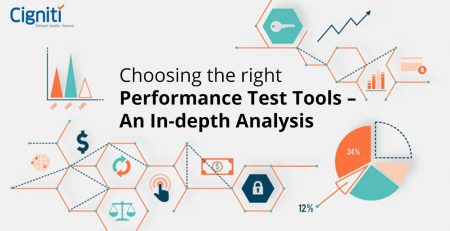5 Tips on How To Plan Application Performance Testing
Today, businesses understand that delivering a complete digital experience involves much more than just optimizing page speed and load times. In an increasingly competitive market, user satisfaction depends on a seamless, reliable, and high-performing digital interface. This recognition has led to a paradigm shift where performance testing has emerged as a critical responsibility for software testers.
To meet these demands, testers are now encouraged to adopt a multi-layered testing approach that extends beyond the traditional load and stress testing schedules. This holistic strategy ensures that applications are not only robust under normal conditions but also resilient under extreme scenarios and adaptable to various user behaviors.
In this blog, we will delve into some of the best practices in performance testing that transcend conventional methods. These practices will equip testers to tackle a wider array of challenges, ensuring they can deliver an optimal digital experience. From advanced techniques in performance monitoring to incorporating real-user simulations and proactive testing strategies, we will explore how testers can enhance their skills and methodologies. By embracing these advanced practices, testers can contribute significantly to the overall quality and reliability of software, ultimately leading to higher user satisfaction and business success.
Build a Complete Test Strategy
Start with a comprehensive test strategy to identify the types of tests needed to perfect the application. Performance testing requires extensive planning and preparation before the actual execution begins. Developing a thorough understanding of how various components interact within the system and the specific user expectations is crucial. This knowledge allows testers to design tests that accurately reflect the real-world scenarios the application will face.
Try to Include Think Time in Testing
Think time is the measure of the pauses a typical user takes while interacting with your application. This often occurs when a user stops to view information on the screen, switches between different sections, or makes decisions, such as verifying details during a purchase.Including think time in performance testing scripts is crucial because it helps simulate real user behavior more accurately. Neglecting think time can lead to unrealistic test scenarios where the system is continuously bombarded with requests that don’t reflect actual usage patterns.
Identify the Performance Bottleneck
Regardless of your level of experience, predicting the next performance issue is always challenging. Performance problems can arise unexpectedly and in various parts of an application, making it essential to adopt a methodical approach to identification and resolution. One effective strategy is to start by examining individual components when an issue occurs rather than immediately focusing on the entire module. While this approach can be time-consuming, it ultimately saves significant effort and resources by enabling more precise problem identification and resolution.
Learn from Earlier Experiences
Performance issues are an inevitable part of software development, and resolving them can be a complex and time-consuming process. However, each issue encountered provides valuable learning opportunities that can significantly improve your future testing efforts.By learning from earlier experiences, you can develop a more effective and efficient approach to performance testing. This not only helps in quickly identifying and resolving issues but also contributes to the overall quality and reliability of your software. Ultimately, leveraging past experiences leads to more robust applications and a better user experience.
Emphasize Baseline Tests
In any performance testing project, effective time management is crucial. One of the most effective strategies for optimizing time and resources is to place significant emphasis on baseline tests. Baseline testing serves as the foundation for all subsequent performance evaluations, and its importance cannot be overstated.By emphasizing baseline tests, you lay the groundwork for a more efficient and effective performance testing process. This proactive approach not only saves time and resources but also ensures that your application meets the desired performance standards, leading to a better user experience and higher satisfaction levels.
Conclusion
These are a few factors you need to remember before outlining a performance testing automation strategy, in addition to the regular technical aspects you already know. If you still need to beef up your performance testing, check out the Performance Test Accelerator (PTA) developed by Cigniti. PTA helps businesses address performance testing challenges in terms of infrastructure, user loads, and heterogeneous IT systems.
Need help? Contact our Performance Testing experts to learn more about how to plan application performance testing and discuss comprehensive possibilities of performance testing services.





Comments (2)
“You can always understand tests better by understanding how components interact and the user expectations from the system.”
Having a software bill of materials would definitely help in this situation. Knowing how your components interact (i.e custom made and open source) is easier to do when you can look and see a list of which components are working, where, and how.
Testers can easily identify the problems during initial stage so, it is always good to conduct test under the same conditions and see if the problems persist otherwise it gets difficult later on to isolate them.